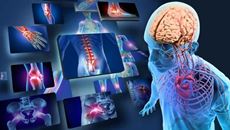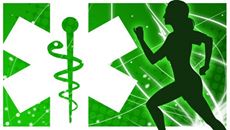- Delivery Method Online
- Professional Certificate
- 24hrs Suggested Study Time
- 3 Months Access
- Tutor Support
- Study On Any Device
- 6720 Students
Become a Physiotherapy Assistant

Prepare for a rewarding career as a valued member of a physiotherapy team.
Prepare for a rewarding career as a valued member of the physical therapy team while learning all about the human body, specific disorders, and the way physical therapists treat these disorders.
We'll begin by exploring the history of physical therapy and the relationships between physical therapists, physical therapist assistants, and physical therapy aides. You'll get training on how to communicate effectively with other health care professionals and patients. You'll also come to understand the medical documentation that physical therapists use and principles of ethics and law that affect the PT aide.
Physical therapists often use words and terms that may be unfamiliar to you, so we'll devote some time to learning much of the language of PT. We'll then spend two lessons studying the body's 11 organ systems. You'll learn the names of the organs in each system, their main functions, and some common disorders.
Health care professionals must take extra care to avoid the spread of infection, so we'll go over that important subject. Along with infection control, you'll learn proper body mechanics and how to safely move patients. We'll also cover the normal gait cycle, and you'll learn how to help patients walk with assistive devices like walkers, crutches, and canes.
Physical therapists use physical agents like heat, cold, ultrasound, and electricity to treat many of their patients, so we'll explore these agents. You'll learn when PTs use them and important precautions. We'll move on to a discussion of exercise, and we'll spend a lesson studying the principles of strengthening, aerobic, and range-of-motion exercises.
We'll close with a study of balance and coordination disorders. You'll learn about the vestibular system—an important mechanism that helps you keep your balance. We'll also talk about treating children with developmental coordination disorder and developmental delays.
By the time you finish this course, you'll have gained valuable knowledge and be well on your way to becoming an important member of the physical therapy team!
Courses are delivered to you through expertly executed lessons, online instruction and interaction with like-minded students. Our courses are designed to deliver all of the benefits of studying in a classroom whilst giving you the flexibility to study at a time and place to suit your needs. You can access your classroom 24/7 from any device with an internet connection.
This course has a 3 month duration. You'll complete comprehensive lessons, quizzes and assignments before submitting your final exam at the end of the course to achieve your certificate. Courses must be completed within the 3 month access period.

Holly Trimble
Holly Trimble has a bachelor's degree in physical therapy from the University of Colorado and a master's degree in pediatric physical therapy from Boston University. She completed an additional 15 credit hours in education at the doctoral level. S... Read more
Read Holly Trimble's ProfileFrequently Asked Questions
What people are saying about our courses
The Learning Environment
From the moment that you enrol in the Become a Physiotherapy Assistant you will become an integral part of our learning community. You'll find yourself with the freedom to learn at a speed that suits you, on any device, from anywhere in the world. Achieving your career goals no longer has to mean compromising family and work commitments.
Ready to get started?
Enrol NowOur Values
Learn At Your Own Pace
We believe in personalised learning. That's why we provide all the tools and support you need to succeed at your own pace. With flexible learning, you'll stay motivated and retain more information. Plus, you can balance your studies with work and family commitments to make your dreams a reality.
We Won't Break The Bank
Education should be accessible to anyone who wants to learn. That's why we offer some of the most competitive prices in the industry with payments plans for just $25 per week. Investing in your future is a smart choice and doesn’t have to break the bank.
Industry-Led Courses
There's no better way to learn than from experts with years of experience in your field. That's why each of our 200+ industry-led courses are designed to give you a real-life perspective on your industry. With our expert mentors, you'll learn from people who have a wealth of knowledge and experience, and who are passionate about sharing it with you.
Get The Personal Support You Deserve
At Vibe Learning, we're real people who are dedicated to providing you with personal support every step of the way. Our industry experts are not only professional and knowledgeable but also incredibly passionate about sharing their expertise with you. With their guidance, you'll gain invaluable insights and practical knowledge to help you succeed.
Still looking?
Check out the following courses related to Become a Physiotherapy Assistant:


